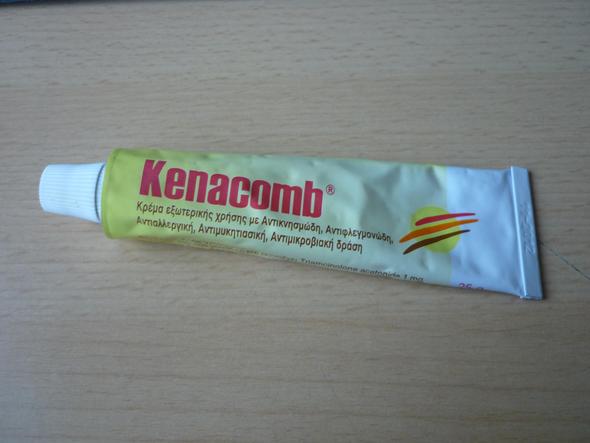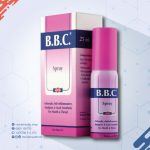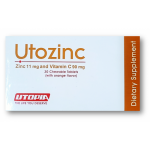
KENACOMB
CREAM _ OINTMENT
NAME OF THE MEDICINAl PRODUCT :
Kenacomb Cream
Kenacomb 0intment
QUALITATIVE AND QUANTITATIVE COMPOSITION :
Each gram of cream, ointment contains:
1 mg of triamcinolone acetonide,
100,000 units of nystatin,
2.5 mg of neomycin base (as neomycin sulphate),
0.25 mg of gramicidin.
Excipients :
Base: Perfumed vanishing cream for Kenacomb Gleam and plaslibase to< tile Ointment (poIyelh~ene minefal oil gel base).
CLINICAL INFORMATION :
Indications
Cream, ointment
For the relief of the Inflammatory and pruritic manifestations of
dermatoses likely to become or are already Infected.
Dosage and Administration
Route of Administrotion :
Cream, ointment
Forl!>picaluse
Adults
Cream, ointment
Apply a thin film to affected area 2 to 3 times daily.
Children
These products are not for children under one year of age (see 5ecfion Wamings and Precaufioos).
Elderly
Corticosteroids shOOfd be used sparingly and for short periods of time, as natural thinning of tile skin occurs in the eklerty. If, atter about 7 days application, little Of no improvement has occurred, cutturallsolation of the offending organism should be followed by appropriate local or systemic antimicrobial therapy.
Renal impairment
There are no relevant data available.
Hepatic impairment
There are no relevant data available.
Contraindication :
These products are contraindicated in:
– Tuberculous and most viral lesions of the skin, particularty herpes simplex and varicella
– Fungal lesions not susceptible to nystatin
– Patients with hypersensitMty to any of tile components
Warnings and Precautions :
– Adrenal suppression
Adrenal suppression can occur, even without occlusion.
– Occlusive dressings
The use of occlusive dressings should be avoided because of the increased risk of sensitlvtty reactions and increased percutaneous absorption.
– sensitivity to necmycin
The possibility of sensitivity to neomycin should be taken into
consideration especially in the treatment of patients suffering from leg uicm.
– Absorption of neomycin
The product should be used with caution and in small amounts in the treatment of skin infections following extensive burns trophic ulceration and other conditions where absorption of neomycin Is possible.
– Treatment duration
Steroid-antibiotic combinations should not be continued for more than 7 days in the absence of any clinical improvement, since in this situation occult extension of infection may occur due to the masking effect of the steroid. Extended or recurrent appllcatlon may increase the risk of contact sensitisation and should be avoided.
If used in childhood, or on the face, courses should be limited to 5 days and occlusion should not be used.
– Eyes and mucous membranes
Not for ophthalmic use.
Contact with the eyes or mucous membranes should be avoided.
– Dermatofoglc use
Should not be used for taclal rosacea, acne vulgaris or perioral dermatitls.
– Application
Should not be applied to the external auditory canal in patients
with perforated eardrums. The products should oot be used for extensive areas because of possible risk of systemic absorption and neomycin-induced ototoxicity.
– Special populations The product should be used with care in patients with established hearing loss.
– Children older than 1 year
In infants, long-term continuous topical steroid therapy should
be avoided. COurses should be limited to 5 days and occlusion
should not be used.
When applied to pediab1c patients, this medication should be limited to the least amount for the shortest duration compatible
with an effective therapeutic regimen. These patients should be closely monitored fOf signs and symptoms of systemic effects.
Use of this medication over large surface areas Of fOf prolonged
perklds in pediatrtc patients could results in sufficient patients
may demonstrate greater susceptibility to HPA axis suppression
and CUshing’s syndrome than mature patients because of a
larger skin surface area to body weight ratio. HPA axis suppression, Cushing’s syndrome, and intracranial hypertension have been reported in children receiving topical corticosteroid (see Section Adverse Reactions).
Interactions :
Not applicable.
Pregnancy and lactation :
Fertility
There are no relevant data available.
Pregnancy
These products should be used with caution only when the
benefit outweighs the potential risk. There is inadequate evidence of safety In human pregnancy. Topical administration of corticosterolds to pregnant animals can cause abnormalities of foetal development including cleft palate and Intra-uterine growth retardation. There may, therefore, be a very small risk of such effects in the human foetus. There are theoretical risks of neomycin-Induced foetal ototoxicity.
Lactation
These products should be used with caution only when the benefit outweighs the potential risk.
Adverse Reactions
Post Marketing Data
Adverse reactions are ranked under headings of frequency using the following convention:
Very common 2:1110
COmmon 2:1Jl00to <1/10
uncommon 2:1/1000 to <11100
Rare 2:111סס00 to <111000
Very rare <111סס00
Not knOwn (cannot be estimated from the available data), Immune system disorders
Not known: hypersensitivity
Skin and subcutaneous tissue disorders
Not known: skin atrophy, petechiae, ecchymosis, erythema, telangiectasia, hyperhidrosis, purpura, skin striae, hirsutism, dermatitis acneiform, lupus erythematosus-like lesions, suppressed reactions to skin tests
These effects may be enhanced with occlusive dressings. EndocrIne disorders
Not known: hypothalamic-pituitary-adrenal (HPA) axis
suppression (see Section Warnings and Precautions), manifestations of Cushing’s syndrome
Following discontinuation, recovery of HPA axis function is
generally prompt and complete.
Renal and urinary disorders
Not known: glycosuria, nephropaltry toxic
Metabolism and nutrition disorders
Not known: hyperglycaemia
Ear and labyrinth disorders
Not known: ototoxicity
General disorders and administration site conditions
Not known: impaired healing
Overdosage
Symptoms and signs
Topically applied corticcateroids and neomycin can be absorbed in sufficient amounts to produce systemic effects (see Section AilverseReactk>ns).
Treatment
In the event of accidental ingestion, the patient should be observed and treated symptomaticalty.
Clinical Pharmacology
Pharmacodynamics
Pharmacotherapeutic group
corticosteroids, combination with antibiotics.
Mechanism of Action :
Triamcinolone acetonide is a potent fluorinated corticosteroid with rapid anti- inflammatory, antipruritic and anti-allergic actions.
The combined action of the antibiotics neomycin and gramicidin provides comprehensive antibacterial therapy against a wide range of Gram-positive and Gram-negative bacteria, including those micro-organisms responsible fOf most bacterial skin infections.
Nystatin is an antifungal antibiotic, active against a wide range
of yeasts and yeast-like fungi, including candida albicans.
Pharmacodynamic effects
Pharmacokinetics
Absorption
The extent of percutaneous absorption of topical corticoSteroids
is determined by many factors ioduding me vehicle, the integrity of the epidermal barrier. and the use of occlusive dressings.
Topical corticosteroids can be absorbed from ttJe normal intact
skin, inftammation andIor other disease processes in the skin increase percutaneous absorPtion. Nystatin and gramicidin are not absorbed from intact skin or mucous membraneS. Neomycin can be absorbed through inflamed skin
Disbibution :
Once absorbed through the skin, topical corticosteroid are handled through the same pharmacokinetic pathway as systemically administered corticosterolds. Corticosteroids are bound to plasma proteins in varying degrees.
Metabolism
Corticosterolds are metabolized primarily in the liver and are then excreted by the kidneys.
Elimination
SOme of the topical corticosteroids and their metabolites are also excreted Into the bile. Once neomycin is absorbed. it is rapidly excreted unchanged through the kidneys. The half-life is approximately 2-3 hours.
Pack & storage :
Kenacomb Cream: carton box containing a Tube of 15 gm &30gm
Kenacomb Oinbnent: carton box containing a Tube of 15 gm &30gm
Store at temperature not exceeding 300 C in a dry place.
Patient Instructions;
Keep out of reach of children
Manufactyred by :
SmithKline Beecham, El Haram, EL Giza.

